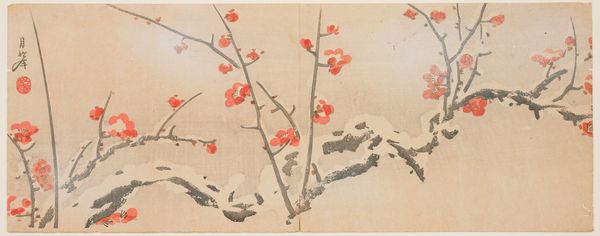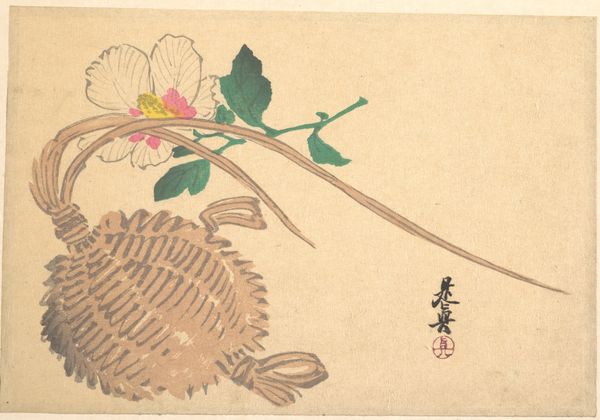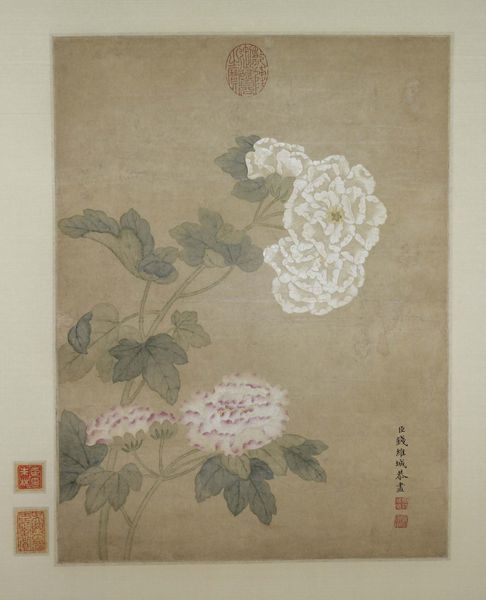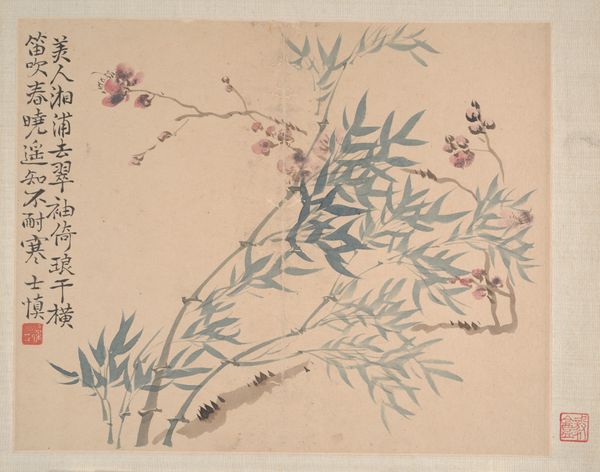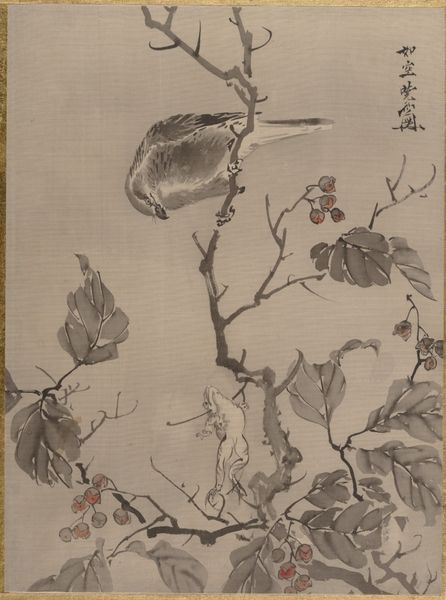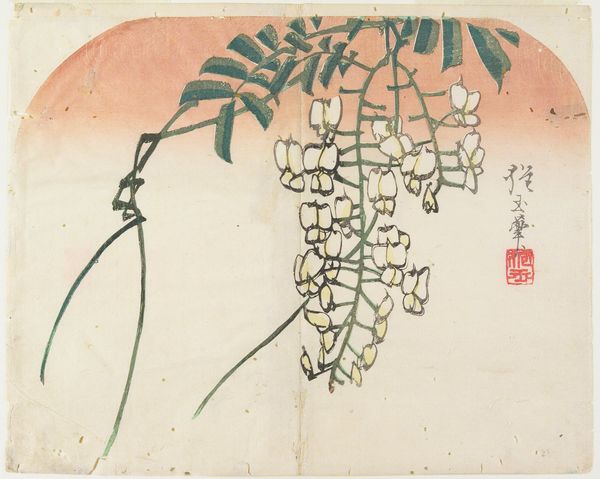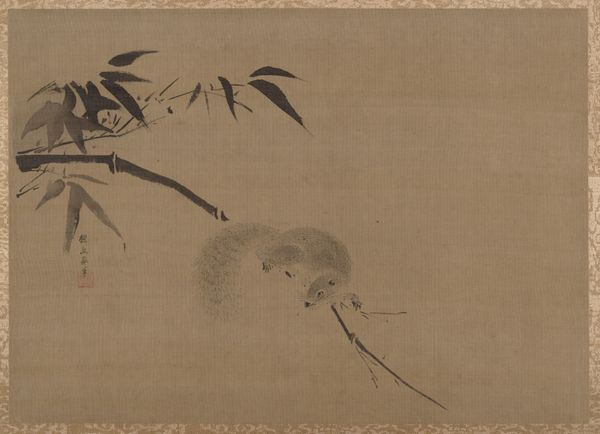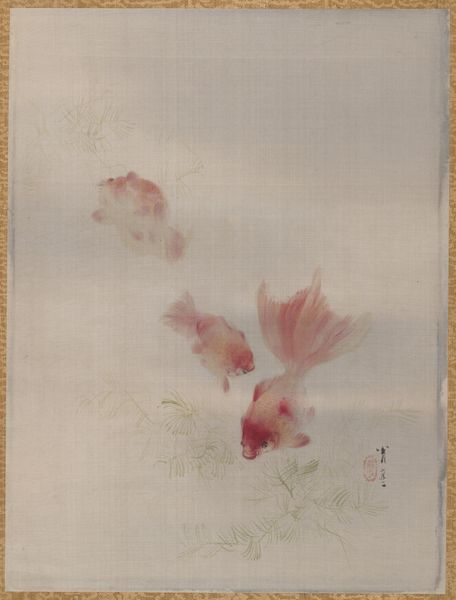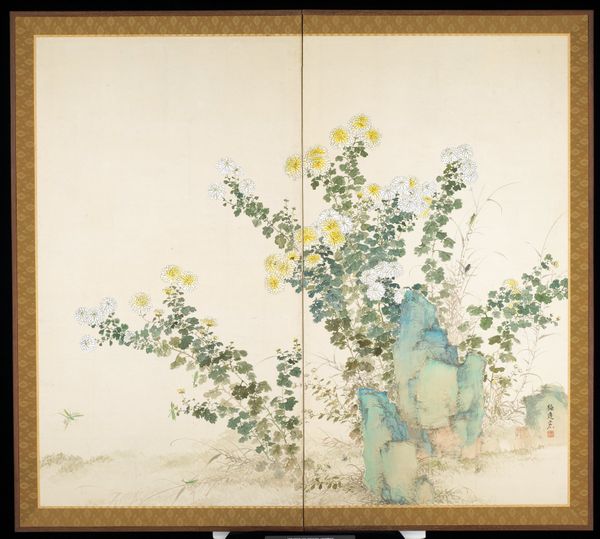
painting, watercolor
#
water colours
#
painting
#
asian-art
#
landscape
#
watercolor
Dimensions: Image: 10 7/16 × 16 1/8 in. (26.5 × 40.9 cm) Overall with mounting: 43 1/16 × 20 5/16 in. (109.4 × 51.6 cm) Overall with knobs: 43 1/16 × 22 1/16 in. (109.4 × 56 cm)
Copyright: Public Domain
Editor: Here we have Matsumura Goshun’s “Grapevine,” painted between 1790 and 1811, currently residing at the Metropolitan Museum of Art. It's rendered in watercolor and I’m immediately struck by how delicate the washes are; almost ethereal. What catches your eye in this piece? Curator: What interests me here is the deliberate display of the artistic process itself. The choice of watercolor, a readily available and easily manipulated medium, speaks volumes about accessibility. It allows for a certain spontaneity. How does this inform your understanding of the labor involved compared to, say, oil painting during the same period? Editor: I guess the perceived skill level shifts? Maybe watercolor implies a certain… lack of rigid training compared to oils. Were there different artistic social structures at play? Curator: Precisely. This piece exists outside the heavily-regulated academic structures often associated with "high art." We should consider this artist’s connection to specific patronage networks and craft traditions of the time. This painting operates within a very different circuit of production and consumption than, for example, a grand history painting commissioned by the Emperor. How does this difference in patronage potentially change the meaning of a motif like grapes? Editor: So, considering the materials and who commissioned it gives the grapes an entirely different dimension beyond just being a pretty fruit. Something more down to earth perhaps? Curator: Indeed. Examining the materiality and means of production leads to a richer understanding of the artist's choices and social position. These watercolors challenge traditional art hierarchies. Editor: This reframes everything! It's not just about the beautiful image, but about who had access to make it, and for whom it was intended. Thanks for this insightful breakdown. Curator: Absolutely. Seeing the artwork in context expands our awareness, transforming both our interpretation and experience.
Comments
No comments
Be the first to comment and join the conversation on the ultimate creative platform.
